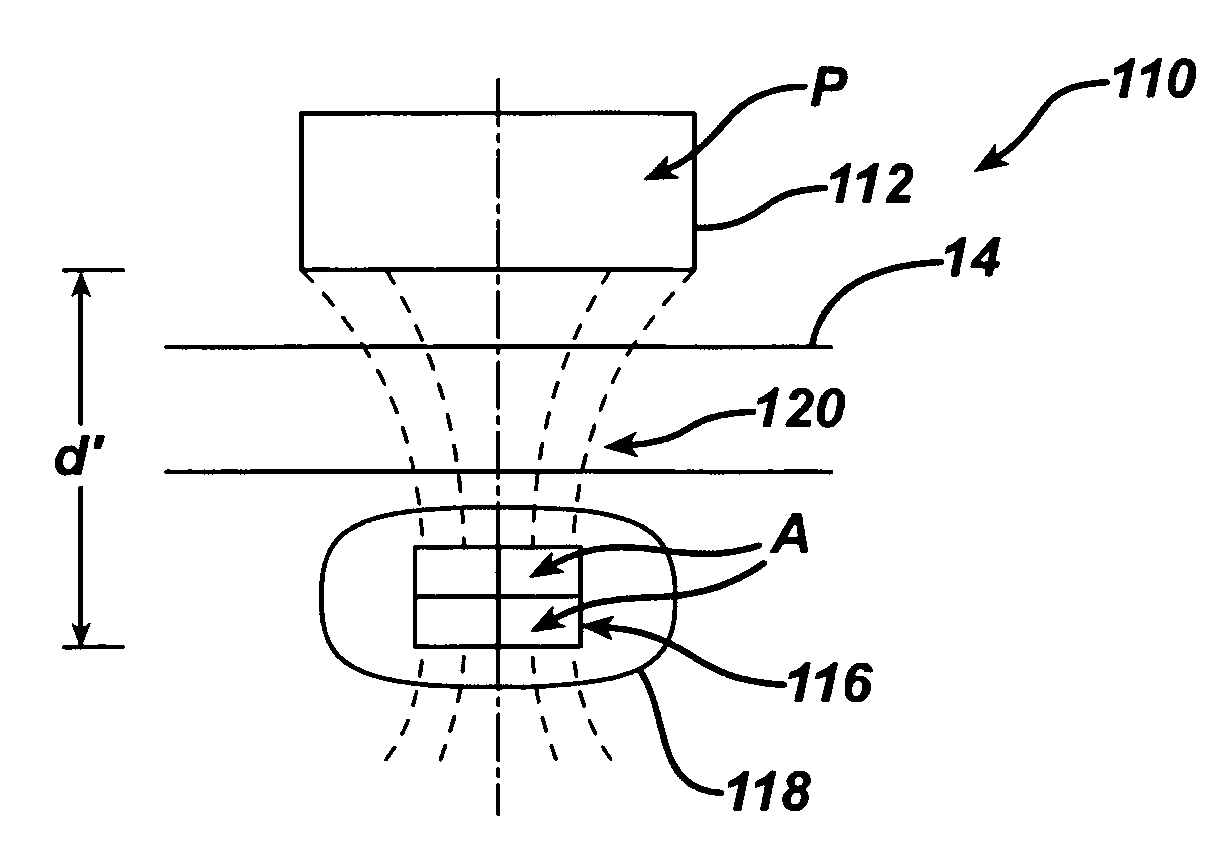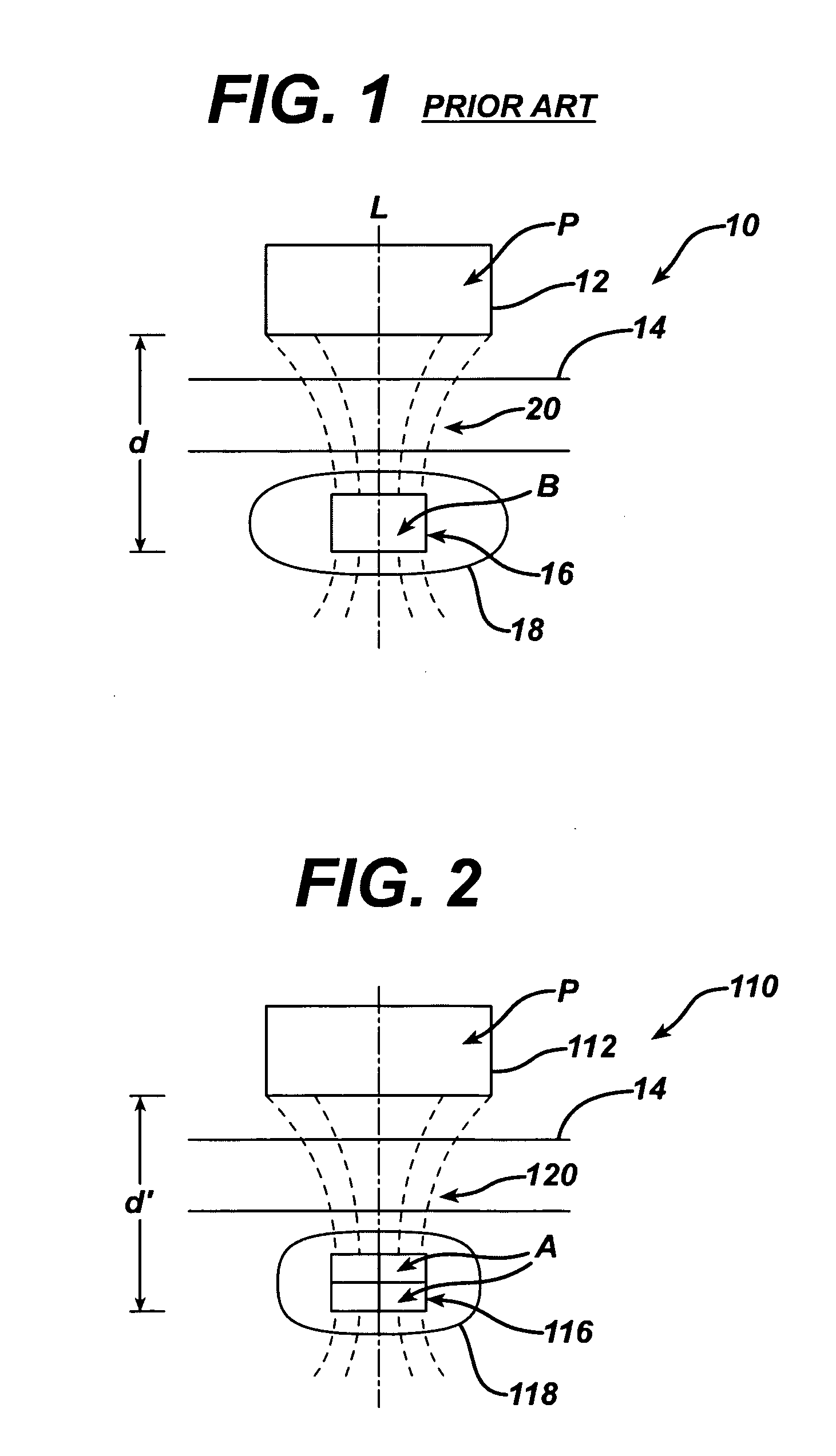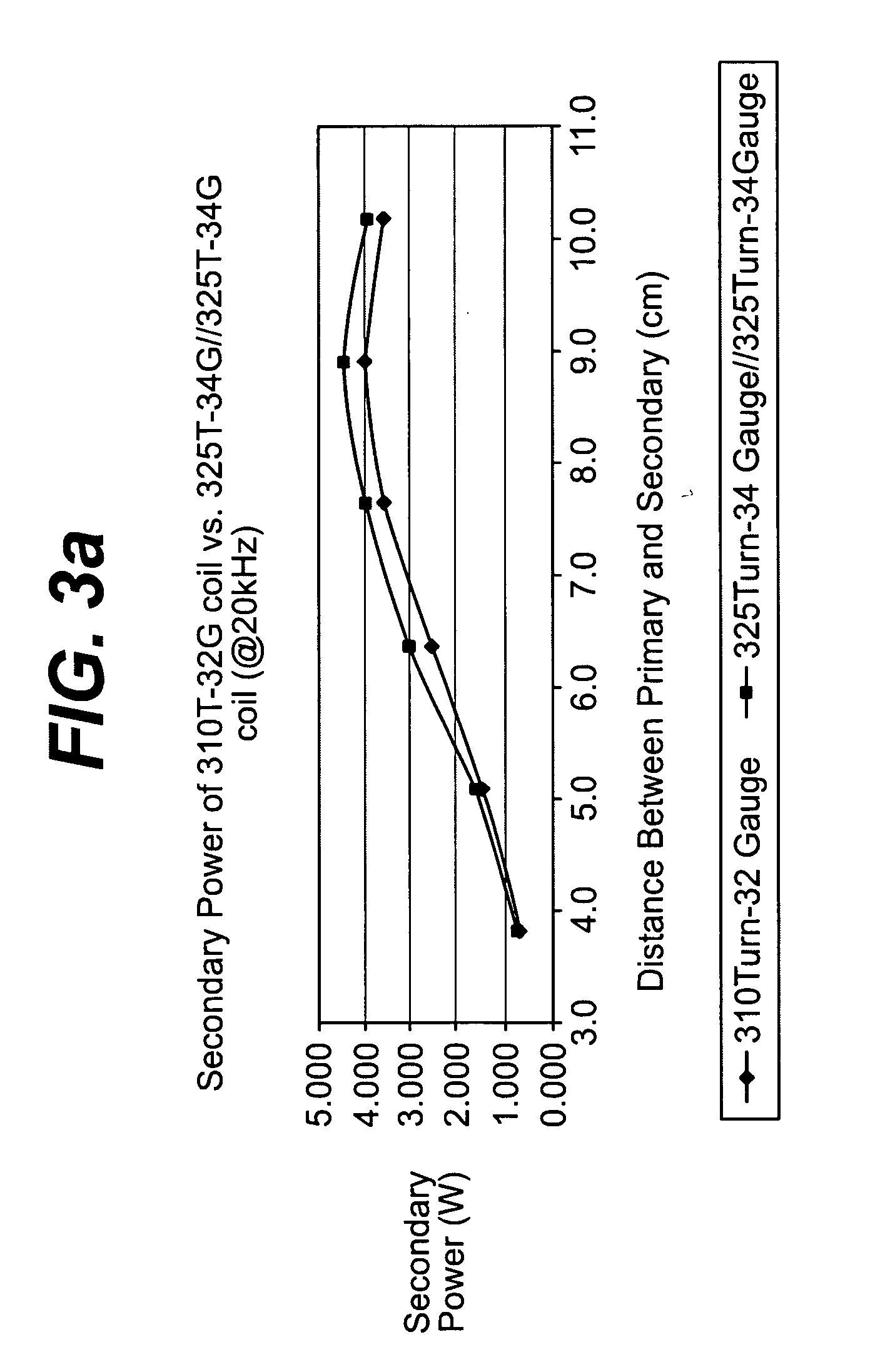Spatially decoupled twin secondary coils for optimizing transcutaneous energy transfer (TET) power transfer characteristics
a technology secondary coils, which is applied in the field of transcutaneous energy transfer systems, can solve the problems of affecting the power transfer characteristics of the device, affecting the patient's mobility, and correspondingly requiring a horseshoe-shaped magnetic core in the implanted device, and achieves enhanced power efficiency and enhanced inductive energy transfer system for powering the device separated by a barrier from the external primary coil
- Summary
- Abstract
- Description
- Claims
- Application Information
AI Technical Summary
Benefits of technology
Problems solved by technology
Method used
Image
Examples
Embodiment Construction
[0037]In FIG. 1, a generally-known transcutaneous energy transfer (TET) system 10 provides power and / or telemetry between a primary coil 12, which is external to a dermal layer 14, to a secondary coil 16 within an implanted device 18, which is under the dermal layer 14. The primary coil 12 is inductively coupled to the secondary coil 16, as depicted by magnetic flux lines 20.
[0038]In developing a more efficient TET and / or telemetry system, and in particular the secondary coils of the system, it is necessary to optimize the combination of coil turns, DC resistance, tank circuit capacitance, tank circuit impedance and total tank circuit Q. Spatially optimizing a secondary coil design is largely dictated by how closely the secondary coil may be placed (distance “D”) and longitudinally aligned (longitudinal axis “L”) to the primary coil 12. Given constraints on the available volume and placement for the secondary coil 16 within implanted device 18, further maximization is generally avai...
PUM
 Login to View More
Login to View More Abstract
Description
Claims
Application Information
 Login to View More
Login to View More - R&D
- Intellectual Property
- Life Sciences
- Materials
- Tech Scout
- Unparalleled Data Quality
- Higher Quality Content
- 60% Fewer Hallucinations
Browse by: Latest US Patents, China's latest patents, Technical Efficacy Thesaurus, Application Domain, Technology Topic, Popular Technical Reports.
© 2025 PatSnap. All rights reserved.Legal|Privacy policy|Modern Slavery Act Transparency Statement|Sitemap|About US| Contact US: help@patsnap.com



